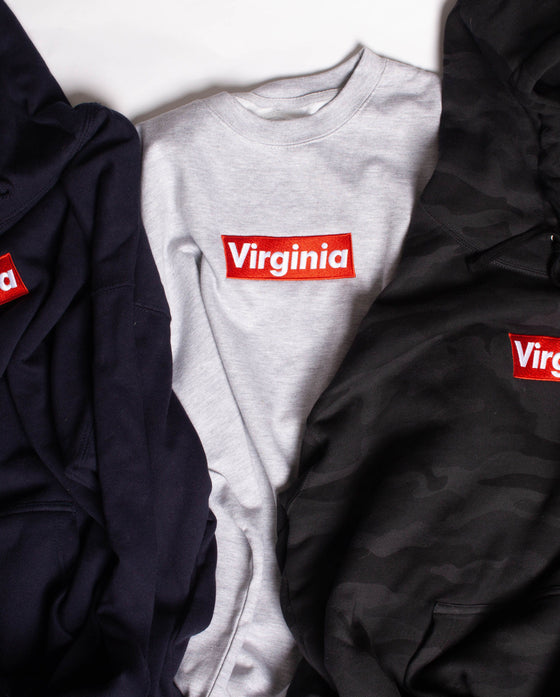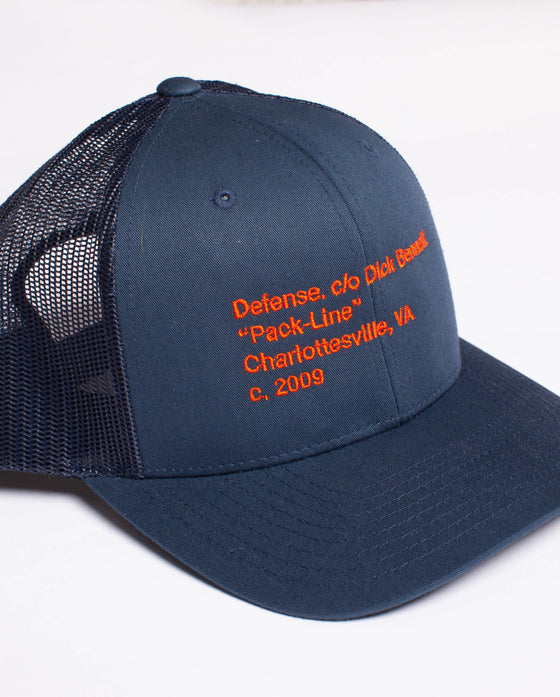X's & O's with Z: UVA's Major Defensive Adjustments

(Image - Ben Rekosh - @br.dsgns)
Following the worst defensive performance from a UVA squad in over a decade, the Virginia coaching staff began experimenting with defensive adjustments that could solve the issues the team experienced against Gonzaga. The most glaring issue out of that game on the defensive end was the ball screen defense. Gonzaga’s continuity ball screen set gave the UVA big men fits especially with slips from Drew Timme and quick pops from Corey Kispert.
These problems guarding ball screens weren’t necessarily unpredictable. With Jay Huff -- a guy whose poor ball screen defense kept him off the floor for three years -- as the starting center and the primary big guarding the pick and roll along with Sam Hauser, Justin McKoy, and Trey Murphy as the other bigs squarely in the rotation, there’s a lack of experience and general comfort playing the Packline defense.
Specifically, these guys have struggled with the hard hedge and long recovery component of Virginia’s traditional ball screen defense. While Huff isn’t necessarily slow, he has long strides and struggles to effectively hedge and then recover quickly. On the backside, new guys like Hauser, Murphy, and Beekman are still learning the defensive rotations.
Traditionally, that concept allowed the ‘Hoos to be aggressive when guarding ball screens while simultaneously not needing to be aggressive with their off ball help defense.
But, without a guy like Mamadi Diakite, Isaiah Wilkins, Darion Atkins, Akil Mitchell, or even Jack Salt to blow up high ball screens with a hard hedge and a swift recovery, Virginia’s infamous, aggressive pick and roll defense was exploited by Gonzaga’s talented roster.
The “MIG”
The initial adjustment the staff made in the Notre Dame game was the designation of off ball help against ball screens. Taking the term from Mike Budenholzer, UVA began using a “MIG” (Most Important Guy) to essentially simplify the off-ball help against ball screens. The “MIG” is the defender on the backside -- generally who is guarding the player two passes away from the ball -- who helps over to the rolling big and ‘tags’ that big, thereby allowing the UVA big man to hedge and recover without being solely responsible for the man rolling to the hoop.
Naturally, this is a method of heavy backside help that leaves the backside open -- especially when the floor is spread. But, it helps simplify the off-ball help responsibilities while simultaneously making life easier on the big who is hedging.
Following the win over the Irish, Kihei Clark noted the adjustments they made defensively, explaining that “we got a guy called the MIG. We put him in the middle when they’re
On ball adjustments
Still though, the staff saw concerns with the ball screen defense. On the Locker Room Access JWilly Show, Jason Williford emphasized that “we have to be better in our ball screen and coverage,” and that “we’re working several different options in regards to how we guard ball screens.” He went on to note that “the point of the ball of the ball screen is a priority. But then also
His point on adjusting the help defense is in regard to the implementation of the ‘MIG’. But, what’s notable about Williford’s comments is his emphasis that “the point of the ball screen is a priority,” and that they’re “trying to figure out different ways to cover.”
Against Wake Forest, we saw the next step in the progression of their ball screen defense adjustment. While, versus the Irish, the ‘Hoos shifted their off ball pick and roll coverage, against Wake, they altered their defense at the point of the ball screen. After getting killed by Wake’s sharpshooters on the perimeter, around thirteen minutes into the first half, the ‘Hoos shifted away from their hedge and recover defense at the point of the ball screen and instead began playing drop coverage -- also known as leveling -- against the pick and roll when Jay Huff was in the game.
When playing drop coverage against a ball screen, the big man essentially plays back, not following his man who sets the screen. As seen in these clips, by dropping and more or less remaining inside the three-point line, Huff gives the guards space to go under the ball screens rather than fighting over top like they would if he were to hedge. That said, if there’s space to go over the screen and the guard can do so without losing a step, the UVA guards have been still going over the top of screens some to stay tighter with their man.
By leveling ball screens with Huff, UVA is using him more as a help defender who stays inside the three point line. Notice how Huff had 5 blocks versus BC? That’s a direct result of him occupying the paint more because he’s not hedging out towards half court. This allows him to be cognisant of and still be able to reach the roller. That said, if a big pops off the screen rather than rolling, Huff has to close out quickly as the guard should have an easy pass to make off the screen without having to deal with the hedge or a guard fighting over the top. Fortunately, the UVA guards are quick enough to get under screens efficiently and recover in time for Huff to get back to his man without having to switch to the guard.
Issues will arise with this coverage when the ‘Hoos come against guards who are willing and able to shoot over the top when the guards go under the screen, or bigs who are lights-out shooters and will immediately pop after setting the screen (Nate Laszewski, anyone?).
Switching ball screens
Things get interesting when Huff leaves the floor. Recently, Virginia has been running Justin McKoy as the backup center, playing small ball with him at the five. In the first half against Wake, the UVA staff actually made the decision to switch 1-5 on all ball screens. This meant that when the Demon Deacons set a ball screen with McKoy at the five, the two Wahoo defenders switched to guard the other guy rather than try and fight through the ball screen or play any type
But, the ‘Hoos went away from the 1-5 switch after Wake Forest took advantage of the lack of backside help. While McKoy is agile and quick enough to stick with guards and the Deacons lacked the big men who would take advantage of a mismatch, without a big on the backside there to clean things up, Wake Forest feasted off dribble drives to the rim. Notably, that schematic shift was likely due to the fact that Wake played a good deal of small ball.
That said, despite the struggles when switching 1-5, UVA has actually been switching 1-4 some with Huff on the floor. This is likely because they don’t want Hauser, who is a bit slow-footed, to be hedging out on the perimeter and are more comfortable with him switching onto guards. Additionally, the guards are fairly similar defenders so switching between them is less of a big deal and Trey Murphy is lengthy and agile enough to defend guards.
Implications moving forward
These various adjustments defensively all point towards this staff catering to this fairly unique roster. There’s a lack of elite defenders on the wing or in the paint for this team and there’s still a good amount of inexperience in the defense. Expect the staff to continue to adjust and play different coverages depending on the matchups.
With all that being said, this type of fluid shifting of the schemes is a bit new. Traditionally, Bennett and his staff will stick to their guns defensively. But, as we’ve seen on the offensive end, the staff is continuing to adjust according to their personnel. And, hopefully more flexibility will allow this team to reach its highest potential.


